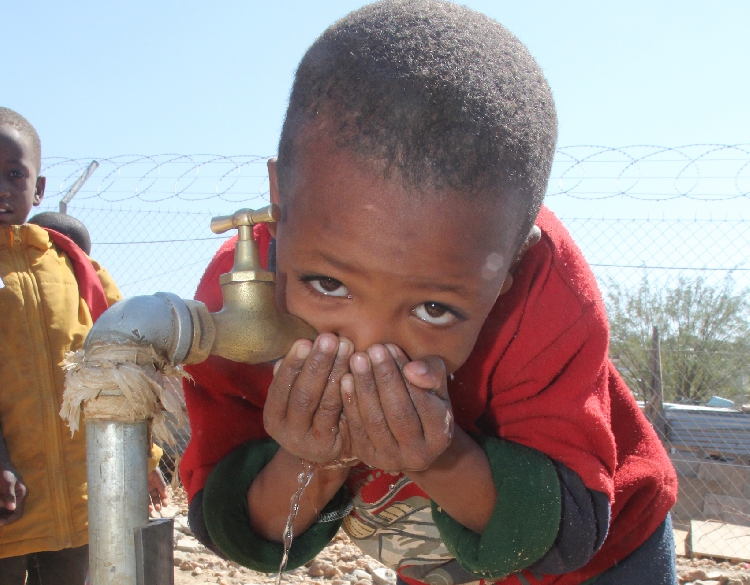A CONVOY of fuel trucks blocks the single-lane road, moving in a close herd. Warm air floods through the window. The scenery drags past mountains and thorny acacia.
A gravel road leads to the S Von Bach Dam. It is one of three dams supplying Windhoek with water, and it is nearly empty.
For Windhoek, home to Namibia’s industry and 20% of its 2,3 million people, this is an intractable problem.
The national utility NamWater says the city has six months’ supply of water left. After that, it will be up to people’s ingenuity to keep the taps dripping. But drought is nothing new in Namibia.
The only consistent rivers form the country’s northern and southern borders. Its ephemeral rivers only flow when it floods, looking like lazy brown snakes with full bellies lounging on a parched and cracked countryside.
South of Von Bach dam lies Windhoek, encased in a lumpy basket of hills. The dry riverbeds, overwhelmed by reeds and rubbish, are crossed by drifts. Red and white metre sticks give an idea of how deep they are during flash floods which bash Windhoek.
“When you have no other options, people will accept anything you put on the table,” says Pierre van Rensburg, one of the City of Windhoek’s chief water engineers, as he cancels incoming calls to talk about his city’s relationship with water.
“It was decided that we would reuse our wastewater.”
The 30-minute drive to the jewel in Windhoek’s water supply system starts in the original city centre, which is characterised by wide boulevards and old, large-brick offices, and ends next to the fields of zinc settlements to the north where people have to queue with buckets to get water.
In Namibia, water scarcity and environmental realities are taught from a young age. “If you can get one student interested, they will go home excited and talk to five family members,” Van Rensburg says.
The Goreangab Water Reclamation Plant was born out of Windhoek’s water emergency in the 1960s. It was the first in the world to take municipal wastewater and turn it into municipal drinking water, Van Rensburg adds.
Older and lagging behind technologically, it has been turned into a plant for irrigation water. While the technology is accepted globally, drinking water which was once wastewater is not done, except in Windhoek.
From the top of Goreangab, gravity pushes the wastewater through large flotation ponds and aeration tanks.
These disturb, swirl and bubble the sewage until the last few pollutants are caught up in membranes.
The filtered water which comes out is clean.
“People are always trying to catch us out so they can say that reusing water does not work. They have not succeeded,” Van Rensburg says, his voice a shade removed from smug. He has the same air of confident pride that Namibians have when talking about their unique water system.
He says being a world leader places incredible pressure on everyone involved.
“We cannot have one slip-up because just one illness will have serious repercussions,” he adds. This has not happened to date.
From the plant, water is piped to the centre of Windhoek, where it is mixed with water coming from NamWater.
A quarter of all the water coming out of taps in the city had once left the city in a sewage pipe. That water costs N$11 (about US$0,70) per cubic metre to supply. NamWater charges about US$1.
Van Rensburg — who first came to the plant as an intern expecting to make coffee and instead got to work with its chief engineer — criss-crosses the world talking about the plant.
South Africa has been a frequent destination.
But nobody seems to be listening.
A multi-million dollar plant in Australia was stopped after a referendum.
Only Malaysia and Texas in the United States have plants working on a large scale. South Africa has one working plant in the Western Cape town of Beaufort West. It did not look across the Orange River for tips.
The technology works, but perception is key. In South Africa, eThekwini in KwaZulu-Natal tried to get 10% of its water from two re-use plants. But a community petition objected, citing religious objections and a belief that other sources of water could be found.
Municipal engineers have previously told the general public that there is really very little they can do about “irrational fears”.
Stay informed with The Namibian – your source for credible journalism. Get in-depth reporting and opinions for
only N$85 a month. Invest in journalism, invest in democracy –
Subscribe Now!






